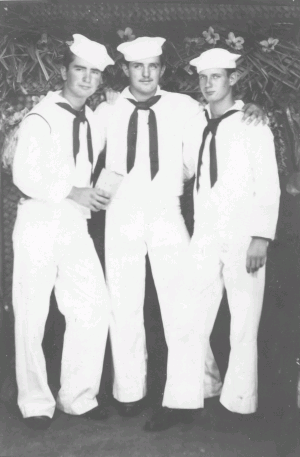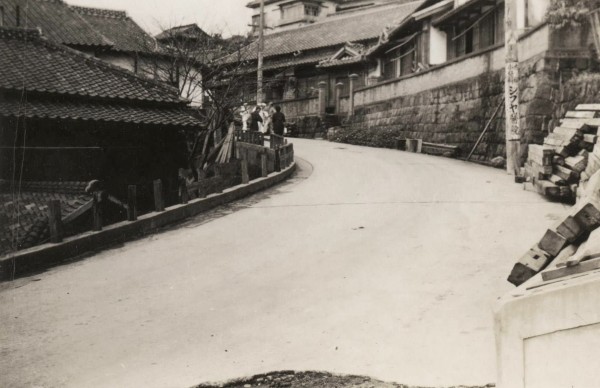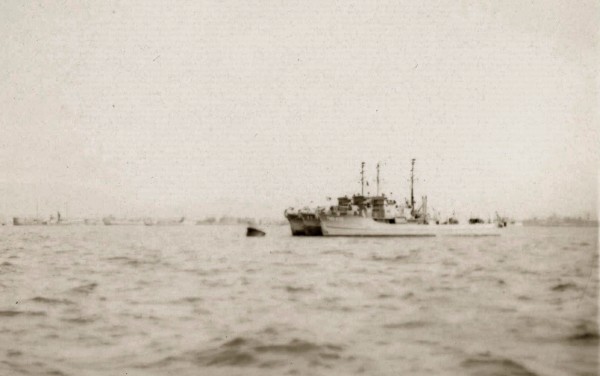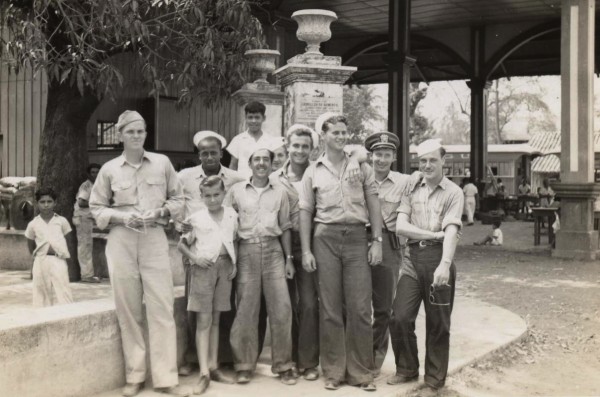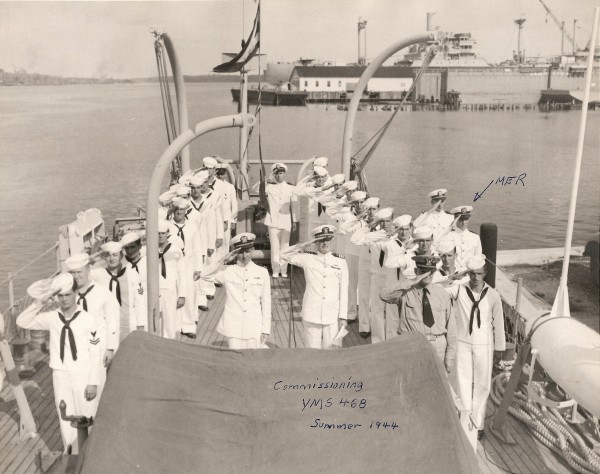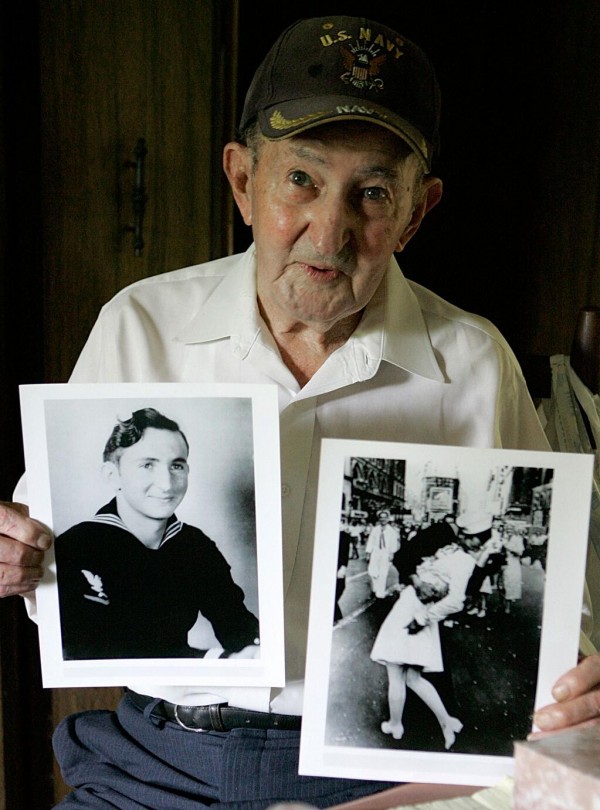Bob Donaldson, the artist of the USS Rhea watercolor painting featured in this post, brother of Chuck Donaldson, has sent me a photo of his memorabilia wall including an impressive model he built of the ship.
A photo of the model that I built of the Rhea, the two watercolors that I painted as well as the Youth crest that was used on board when I was a cadet. Above the model is the actual battle ribbon from the ship that was given to me by a friend and ex sea cadet officer who managed to obtained the ribbons before the ship was demolished and scrapped. —Bob Donaldson

